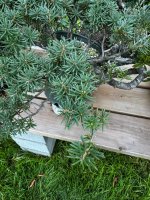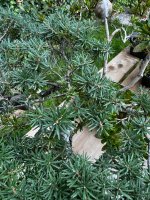Others have Hemlocks that are far into development in the area. I also live at a higher elevation in the Ponderosa forest (not in town) on the edge of the Newberry National Volcanic Monument. Plenty of partial shade. I also have a bunch of vine maples that do great, so I know the Hemlock should be fine in my micro climate. Quite a few as landscape trees around here as well.Looked it up myself! Wow Sagebrush and wester juniper as invasive species. Maybe the area is not so suitable for Hemlock!
Sagebrush and Western Juniper do thrive here, but further east into the lower elevations of the Great Basin.
After the repot, if it survives, I'll need to post some update pictures.




















